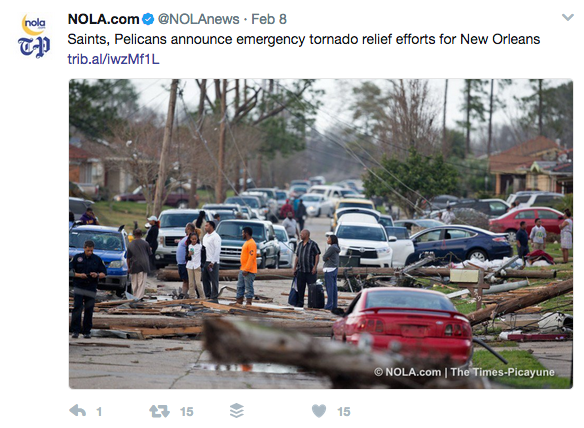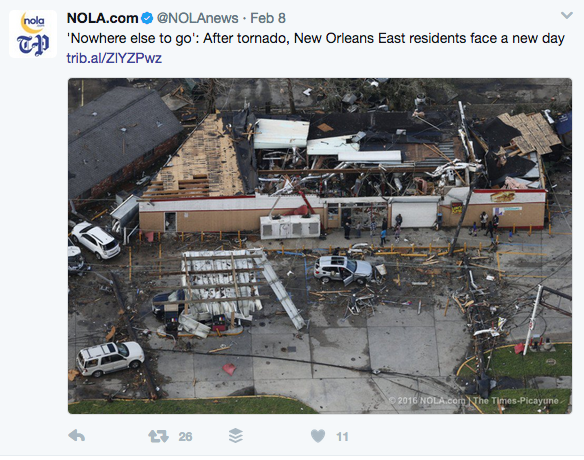
In 2012, the Jersey Shore was struck with a massive hurricane that destroyed most of the shoreline and houses. In the midst of such a huge natural disaster, an unlikely hero helped families and businesses hit by the hurricane, that was social media.
When Hurricane Katrina hit New Orleans in 2005, social media was not the “thing.” Fast forward seven years and social media became something that helped spread the word across the country.
According to Scientific American, “Federal Emergency Management Agency (FEMA) wrote in its 2013 National Preparedness report last week that during and immediately following Hurricane Sandy, ‘users sent more than 20 million Sandy-related Twitter posts, or “tweets,” despite the loss of cell phone service during the peak of the storm.’”
Junior Victoria Marchiani lives in Margate, N.J. and lives three blocks away from the beach. She was in Margate when sandy struck.
“When we usually have a storm, Margate will prepare us, so the city [would] post up wood on the beach houses to protect the windows from shattering on the houses directly on the beach.”
Marchiani’s house was affected in the hurricane.
“Our power was out for six days and my street flooded. My brother actually works for the city so he was able to take one of the industrial trucks and pick me, my mom and my dad up from our flooded house and take us to our family friends’ house which was not flooded,” Marchiani said. “As for social media, all over I saw pictures from mainland kids who had trees fallen into their cars or houses. It was crazy to see what everyone else was experiencing. But it was nice to know that people were safe and able to tweet pictures to let everyone else know what was going on.”
Social media became a way that news broadcasts could post video and pictures of the storm and clean up to show people what was going on, on the Jersey Shore.
“While the storm was happening, local news channels would post updated photos of local businesses flooding. When the storm was finally over, there was one restaurant open on the island, a small pizza place. My friend and I know the owner so he asked us to work the whole day, so everyone who came in would tweet about us working and posting that the pizza place is the only place open on the island. It was cool to be a part of the tweets that everyone saw,” Marchiani said.
People did not have to wait until the six o’clock or 11 o’clock news to get information on what was happening.
Social media is also accessible on any device, so if phone lines are down, people are able to still post or contact their families via social media to say they are okay.
Facebook created a GoFundMe page where people could donate money to those in need. During a time of great disaster, GoFundMe pages were popping up all over Facebook for people to donate money to families who may have lost their homes during the hurricane.
Facebook also has an option now, that during a natural disaster or terrorist attack, you can update your facebook to say you are safe, which gives distant relatives peace of mind knowing their family members are safe.
Senior biology major Ellie Temonia lives in Louisiana and can remember the devastating impact Hurricane Katrina had on her and her family.
Louisiana still experiences large amounts of flooding and Ellie has seen the impact social media has when her area experiences harsh elements.
“Aug. 14, 2016, there was flooding that ruined some homes in Baton Rouge/Hammond area. I know there were definitely GOFUNDME pages set up for the people who suffered the most from the flooding,” Temonia said.

Social media not only helps in natural disasters.
According to Share America, Humans of New York is a Facebook page that has 18 million likes and has raised awareness for Syrian refugees.
A social media site called Kickstarter also helped American businesses during the Obama administration donate millions of dollars to refugees coming to America, according to Share America.
Social media is also a way for many college kids to get their news and current events updates. With many people on the go today, people do not have time to wait until six or eleven at night to get the news, they can just check their phone.
Senior business major John Alizzi said, “I get all my news information from social media, it delivers it the fastest.”
Junior accounting major Sarah Devita agreed with Alizzi.
“Being at school I tend not to watch much tv so I get my news from social media especially from Facebook,” Devita said.
Social media connects many people. It makes the world seem smaller and, in some cases, it can help a family stricken by natural disaster get back on their feet.
Social media may take millennials attention away from work but it is not always for the worst. Sometimes, social media supplies the world with fast news, current events and ways to help people around the world.


